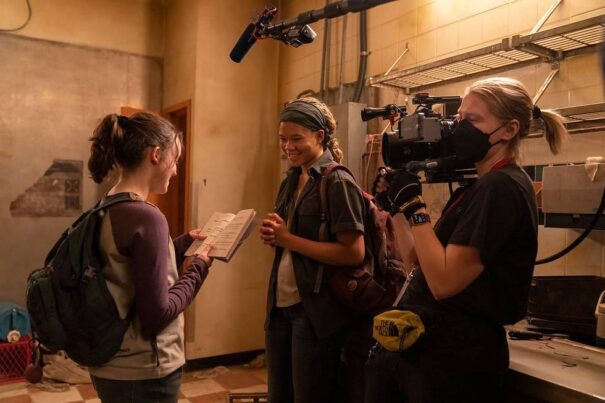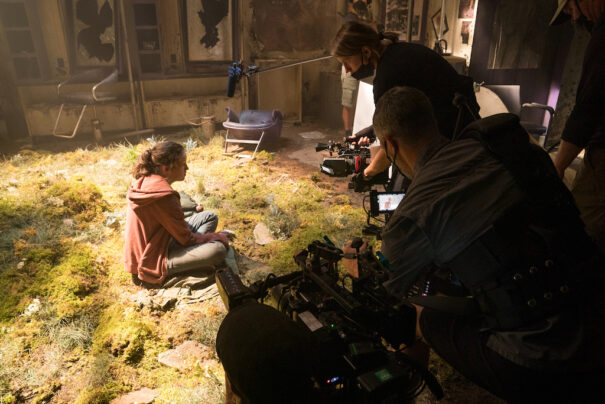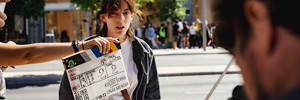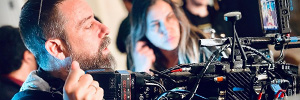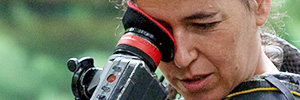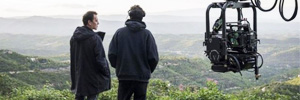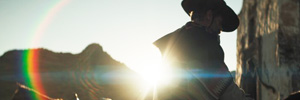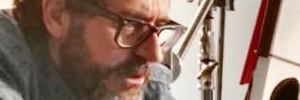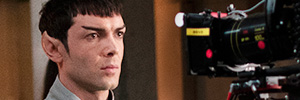Ksenia Sereda rueda ‘The Last of Us’ con lentes Cooke
Las lentes esféricas S4/i de Cooke Optics fueron la herramienta elegida por la directora de fotografía Ksenia Sereda para rodar ‘The Last of Us’, la nueva serie de HBO basada en el aclamado videojuego del mismo nombre desarrollado por Naughty Dog para PlayStation.
La historia de The Last Of Us tiene lugar veinte años después de que la civilización moderna haya sido destruida. Joel, un curtido superviviente, es contratado para sacar de contrabando a Ellie, una niña de 14 años, de una opresiva zona en cuarentena. Lo que empieza como un pequeño trabajo pronto se convierte en un viaje brutal y desgarrador, en el que ambos deben atravesar Estados Unidos y depender el uno del otro para sobrevivir.
“Jugué al juego por primera vez hace casi cuatro años, y me fascinó su aspecto cinematográfico: no estaba preparado para lo hermoso que era, la iluminación era preciosa. Y lo más sorprendente fue lo profundamente que conecté con los personajes del juego”, afirma Sereda. “Así que, por supuesto, fue mucha presión trasladar el lenguaje del videojuego a la serie de televisión, porque ya es hermoso y a todo el mundo, incluido casi todo el equipo, le encantaba el juego”.
Aunque otros tres directores de fotografía, Eben Bolter, Nadim Carlsen y Christine A. Maier se unieron a la producción para trabajar en varios episodios, al principio del proceso Sereda trabajó en estrecha colaboración con Neil Druckmann, guionista del juego original y cocreador y guionista/director para televisión, y Craig Mazin, cocreador y guionista/director para televisión, para captar el lenguaje visual de la serie. Partiendo de una increíble referencia cinematográfica en el propio juego, una de las cosas más importantes era recrear la atmósfera de este mundo distópico.
“Algunos dirán que The Last of Us es una historia postapocalíptica de ‘lucha por la supervivencia’, pero para mí, la verdadera historia trata de personas que construyen nuevas vidas en nuevas circunstancias. Trata de la amistad y el amor, y lo más importante es el viaje de los personajes. Parte de la gracia del juego es la interactividad con los personajes, ver la acción desde su perspectiva, así que para la serie de televisión queríamos estar lo más cerca posible de ellos, y eso influyó en nuestra elección de cámara y objetivos”, explica Sereda.
Lentes esféricas
Tras un breve período de pruebas, Ksenia se decidió por combinar las lentes esféricas Cooke S4/i con la cámara ARRI Alexa Mini. “Estoy obsesionada con las lentes esféricas”, dijo.
“Quería mantener los primeros planos en el lado normal y no recurrir a lentes largos o anchos porque, al trabajar desde la perspectiva de los personajes de la historia, necesitábamos poder mantenernos cerca pero al mismo tiempo preservar la profundidad del fondo. También quería trabajar dentro de la gama de objetivos de 25 mm-50 mm, así que el reto era: ¿qué objetivo no distorsionará los rostros a 25 mm?; ¿dónde puedo llegar con el gran angular en los primeros planos sin que resulte demasiado pop? Cooke S4/i fue una elección excelente para esto”.
“Son preciosos, y son una de mis series de objetivos favoritos. Tienen un plano de enfoque muy característico, pero después la caída entre el plano de enfoque y la zona desenfocada es muy suave. A mí también me encanta trabajar sin filtros, y en los primeros planos no podía apartar la vista de los retratos que podíamos crear con la luz. El sistema de luz, objetivo y cámara dio una imagen muy específica, texturizada y cálida”.
En un mundo postapocalíptico, la escasa iluminación y los destellos fueron un reto que los objetivos Cooke afrontaron bien. “Algunas de las escenas se adentraban en zonas donde la gente no tenía electricidad, por lo que las escenas se construyeron literalmente sólo con linternas. Con las S4/i de Cooke, sabes que cuando trabajas con destellos, éstos son simpáticos, nunca son demasiado abrumadores o sobretintados”, dijo Sereda.
“Rodar con poca luz con el S4/I y la ARRI Alexa Mini produce un hermoso trabajo con áreas de muy alta intensidad y áreas poco expuestas. En general, me encanta trabajar en la parte inferior de la curva de exposición, me encanta empacar la imagen desde el 60% y hacia abajo, teniendo los blancos siempre en un rango muy bajo para darnos la oportunidad de más sombras y texturas en los negros.”
The aspecto orgánico y suave de Cooke también era importante, pero no en detrimento de las imágenes más frescas. “Quería mantenerme en el lado más cálido, no queríamos anticipar que las escenas tristes fueran azules y las felices cálidas. He oído hablar mucho de que los Cook son cálidos, pero nunca he tenido problemas para conseguir una imagen más fría; eso es lo que creo que realmente apoyan, el aspecto neutro de la luz. Y lo que más me gusta es que me ayudan a mantener todos los colores donde quiero que estén”.
La serie cuenta con numerosos efectos visuales, muchos de los cuales se consiguieron de forma práctica. “Fue maravilloso trabajar con Alex Wang, el supervisor de efectos visuales. John Paino, el diseñador de producción, creó unos decorados fantásticos y Barrie Gower hizo un trabajo increíble con las prótesis, así que
Did you like this article?
Subscribe to us RSS feed And you will not miss anything.



